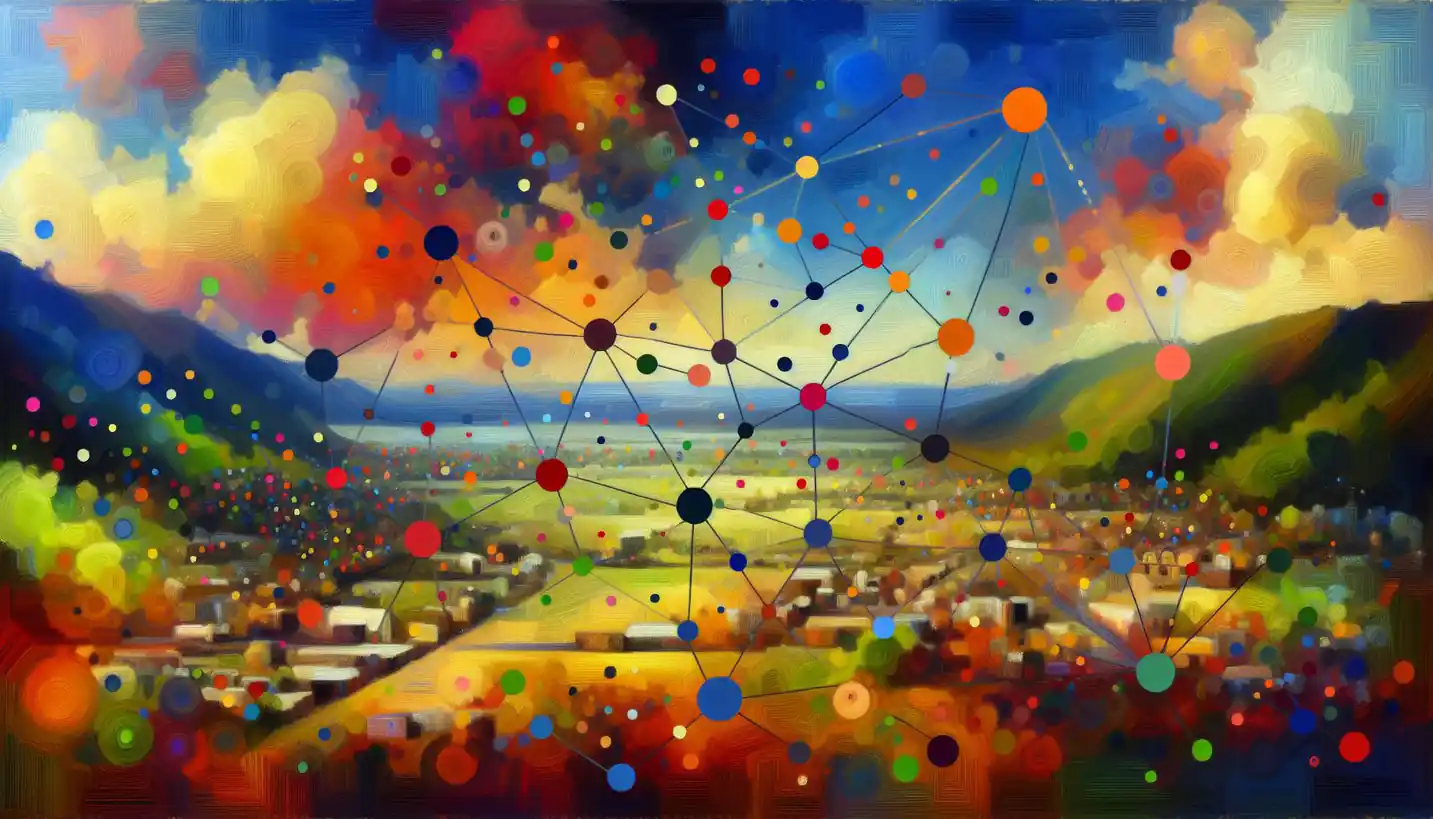· Sociology · 5 min read
Augmented Reality: Shaping Digital Sociology's Future
Augmented reality is transforming digital sociology by blending real and virtual worlds, creating new ways to interact and communicate. Learn how this technology is redefining social experiences and what it means for our future.

In today’s fast-paced world, technology often blurs the lines between what’s real and what’s digital. Picture this: you’re walking down the street, and through your smartphone, digital signs appear, pointing you towards your favorite café, or providing historical info about the building you’re passing. This seamless blending of the virtual and physical worlds is made possible by augmented reality, or AR, a concept that’s not just techy anymore—it’s deeply woven into the fabric of our society.
What is Augmented Reality?
At its core, AR is a technology that overlays digital information—like text, images, or sounds—onto the real world. Unlike virtual reality, which creates a completely artificial environment, AR enhances what you see, hear, and touch in real life with supplementary digital content.
Think of the Pokémon Go craze. People of all ages wandered parks and streets, eyes glued to their smartphones, hunting for digital creatures that appeared to inhabit the real world. This cultural phenomenon was a perfect example of AR not just changing our interaction with the digital environment but also influencing social behaviors.
AR and Sociology: A Perfect Match
Sociology explores how societies function, how people interact, and how societies change. With AR stepping into everyday use, it’s no wonder digital sociology—examining social dynamics through the digital world—finds AR fascinating.
AR can alter how we perceive social spaces. Imagine a classroom where students use AR apps to see 3D visualizations of historical events or scientific concepts, making learning immersive. This dynamic shifts the traditional teacher-student dynamic, encouraging interactive learning and reshaping educational sociology.
Social interactions are also being transformed. Imagine live translations of someone speaking a foreign language, right there in your field of view. Crossing language barriers with AR can enhance communication in multicultural societies, fostering better understanding and collaboration.
The Historical Roots and Growth
The story of AR isn’t just about modern tech. The concept of augmenting reality dates back decades. In the 1960s, Morton Heilig created the “Sensorama,” a machine designed to enhance the movie-watching experience with added sensory inputs. While not strictly AR, it laid the groundwork for thinking about enhanced real-world experiences.
Skip forward to the 1990s, and we see the term “augmented reality” being used in connection with technology designed for fighter pilots. These systems overlaid data onto pilots’ helmet visors, providing crucial information without diverting attention from the skies.
Now, with powerful smartphones and wearables, AR has become far more sophisticated and accessible, crossing into everyday use. This evolution raises interesting questions for sociologists: how does AR influence social norms, cultural practices, and interpersonal communication?
Everyday Life and Social Dynamics
AR has practical uses we might take for granted. Navigation is a good example. Imagine walking around a city, and your phone displays arrows on the sidewalk pointing you in the right direction. This real-time, context-specific information changes how we explore spaces and interact with the environment around us.
Consider retail shopping where you can try on clothes virtually. In a society where online shopping is prevalent, AR bridges the gap between digital convenience and physical experience, altering consumer behaviors.
But AR impacts more than just convenience; it can shift social dynamics. Social media filters are a simple, yet prevalent form of AR. They allow people to modify their appearance or surrounding space in photos, affecting self-perception and social interactions online.
Challenges and Ethical Questions
Despite its wonders, AR isn’t without its challenges. Privacy concerns are among the top issues. Imagine apps that can recognize people’s faces in public spaces and display personal information. While the technology exists, using it responsibly poses ethical dilemmas.
There’s also the challenge of digital inequality. Not everyone has access to devices that can run AR apps, potentially widening the gap between different socioeconomic groups and impacting equity in education, jobs, and more.
As AR becomes more embedded in our lives, it challenges our perceptions of reality. Sociologists are considering how constant exposure to augmented experiences might affect mental health and how societies define what’s “real.”
Future Possibilities and Exploration
Looking ahead, the future of AR in digital sociology is vast and varied. We can expect more personalized and interactive experiences. For instance, in healthcare, AR could enable doctors to view patient data instantly during surgeries. In urban planning, AR could allow people to visualize changes to neighborhoods before construction begins.
The potential for AR to impact sociology is immense, prompting intriguing questions about human behavior and society. How will workplaces change as remote AR meetings become more realistic? What new forms of social activism might arise through AR-enhanced protests or campaigns?
The Takeaway
From its ability to change normal settings to its capability to enhance connections across cultural and linguistic divides, AR is not just a tech trend—it’s a social transformation tool. Digital sociology, with its lens focused on how technology shapes social structures, finds AR to be both a challenge and an opportunity. Understanding its influence is crucial to navigating the future societal landscape, where the virtual and real increasingly intersect.
In this ever-evolving digital age, AR stands at the frontier of technological and social innovation, poised to redefine how we see the world and each other. As curiosity about its implications grows, it encourages us to question, learn, and adapt, embracing every augmented view with open eyes and an open mind.



